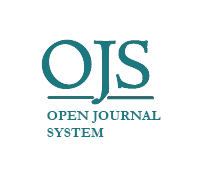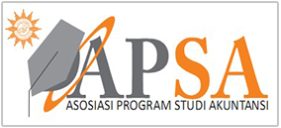Konsep Pencegahan Fraud: Berdasarkan Pada Pemahaman “Skizofrenia” dan Psy-Complex Theory
DOI:
https://doi.org/10.22219/jrak.v14i2.34550Keywords:
Behavior, Conscience, Fraud, Mind, PsychologicalAbstract
Purpose: The objective of this research is to formulate a fraud prevention concept based on psychological dynamics of fraud committers.
Methodology/approach: This postmodernism research uses a case study approach regarding the psychological processes of fraud committers which are similar to the metaphor of “Schizophrenia”. The data of this research was acquired from interviews with fraud committers, an observer, and a person with authority. The analysis was conducted using psy-complex theory, which consists of psychoanalysis and psychotherapy methods.
Findings: This study finds that economic and social pressure contribute to the vulnerability of showing symptoms similar to the metaphor “schizophrenia” will get more severe (the fixated phase). This condition increases the tendency of individuals to engage in activities that are not based on logical reasoning. Therefore, the formulation of fraud prevention concept that is based on the balance in psychological dynamics, between the elements of mind, conscience, and behavior, can be used to recover human’s mental wellbeing.
Practical implications: The fraud act can be committed by anyone. The regulations relating to mental health need to be considered, it’s important part of reducing an individual's motivation to cheat.
Originality/value: The formulation of a fraud prevention concept rooted in the balance of human psychology, between the mind, conscience, and behaviour
Downloads
References
Amanda, A. (2019). Legality of Corruption Eradication Commission's Authority in Arresting Operations Against Corruption Cases Based on Indonesian Procedural Criminal Code. Law Research Review Quarterly, 5(1), 113-122.
Aprilia, A. (2017). ANALISIS PENGARUH FRAUD PENTAGON TERHADAP KECURANGAN LAPORAN KEUANGAN MENGGUNAKAN BENEISH MODEL PADA PERUSAHAAN YANG MENERAPKAN ASEAN CORPORATE GOVERNANCE SCORECARD. Jurnal Akuntansi Riset, 9(1). https://doi.org/https://doi.org/10.17509/jaset.v9i1.5259
Arnone, D., Patel, A., & Tan, G. M.-Y. (2006). The nosological significance of Folie à Deux: a review of the literature. Annals of General Psychiatry, 5(1), 11. https://doi.org/10.1186/1744-859X-5-11
Batabyal, S., & Chowdhury, A. (2015). Curbing corruption, financial development and income inequality. Progress in Development Studies, 15(1), 49-72. https://doi.org/10.1177/1464993414546980
Bologna, G. L., R; Wells, J. (1993). Accountant's Handbook of Fraud and Commercial Crime. John Wiley and Sons. https://www.ojp.gov/ncjrs/virtual-library/abstracts/accountants-handbook-fraud-and-commercial-crime
Cressey, D. (1953). Other People’s Money: A Study of The Social Psychology of Embezzlement. Free Press.
Crowe, H. (2011). Why the Fraud Triangle is No Longer Enough. Sarbanes-Oxley Compliance Journal.
Cuervo-Cazurra, A. (2006). Who cares about corruption? Journal of International Business Studies, 37(6), 807-822. https://doi.org/10.1057/palgrave.jibs.8400223
Deutsch, H. (1938). Folie a Deux. The Psychoanalytic Quarterly, 7(3), 307-318. https://doi.org/10.1080/21674086.1938.11925356
Fox, D. P., I. (1997). Critical psychology: An introduction. Sage Publications, Inc.
Freud, S. (1961). Civilization and Its Discontents. W.W. Norton & Company.
Gupta, S., Davoodi, H., & Alonso-Terme, R. (2002). Does corruption affect income inequality and poverty? Economics of Governance, 3(1), 23-45. https://doi.org/10.1007/s101010100039
Hamadi, Y. S., D; Wijayanti, D. (2022). FRAUD PENTAGON THEORY: ALAT DETEKSI FINANCIAL STATEMENT FRAUD PADA PERUSAHAAN PROPERTY DAN REAL ESTATE DI INDONESIA, MALAYSIA, SINGAPURA. El Muhasaba Jurnal Akuntansi, 13(2), 113-125. https://doi.org/https://doi.org/10.18860/em.v13i2.14305
Insel, T. R. (2010). Rethinking schizophrenia. Nature, 468(7321), 187-193. https://doi.org/10.1038/nature09552
Karim, K., Herman, B., & Syahril, M. A. F. (2021). Criminological Analysis of Online Buying Fraud. DME Journal of Law, 2(01), 10-16.
Khamainy, A. H., Ali, M., & Setiawan, M. A. (2022). Detecting financial statement fraud through new fraud diamond model: the case of Indonesia. Journal of Financial Crime, 29(3), 925-941. https://doi.org/10.1108/JFC-06-2021-0118
Kolstad, I., & Søreide, T. (2009). Corruption in natural resource management: Implications for policy makers. Resources Policy, 34(4), 214-226. https://doi.org/https://doi.org/10.1016/j.resourpol.2009.05.001
Kumar, S. S., N; Thomas, B; Abraham, A;n Kumar, K. (2005). Folie à deux. Indian J Psychiatry, 47(3), 164-166. https://doi.org/10.4103/0019-5545.55942
Kušević, Z. F., T; Babić, G; Vukelić, D. (2020). Depression in the Light of Some Psychoanalytic Theories. Socijalna Psihijatrija, 48(1), 72-103. https://doi.org/https://doi.org/10.24869/spsih.2020.72
Marx, C., Benecke, C., & Gumz, A. (2017). Talking Cure Models: A Framework of Analysis [Conceptual Analysis]. Frontiers in Psychology, 8. https://doi.org/10.3389/fpsyg.2017.01589
Maslow, A. (1943). A Theory of Human Motivation. Psychological Review, 50((4)), 370-396. https://doi.org/https://doi.org/10.1037/h0054346
Méon, P.-G., & Sekkat, K. (2005). Does corruption grease or sand the wheels of growth? Public Choice, 122(1), 69-97. https://doi.org/10.1007/s11127-005-3988-0
Miles, & Huberman. (1992). Qualitative Data Analysis. SAGE Publications Inc.
Montagnese, M., Leptourgos, P., Fernyhough, C., Waters, F., Larøi, F., Jardri, R., McCarthy-Jones, S., Thomas, N., Dudley, R., Taylor, J.-P., Collerton, D., & Urwyler, P. (2020). A Review of Multimodal Hallucinations: Categorization, Assessment, Theoretical Perspectives, and Clinical Recommendations. Schizophrenia Bulletin, 47(1), 237-248. https://doi.org/10.1093/schbul/sbaa101
Nurachmi, D. A., & Hidayatulloh, A. (2021). Gender, religiusitas, love of money, dan etika penggelapan pajak. Jurnal Ilmiah Akuntansi Universitas Pamulang, 9(1), 30-41.
Parker, I. (2007). Critical Psychology: What It Is and What It Is Not. Social and Personality Psychology Compass, 1(1), 1-15. https://doi.org/https://doi.org/10.1111/j.1751-9004.2007.00008.x
Parker, I. (2015). Critical Discursive Psychology. Palgrave Macmillan London. https://doi.org/https://doi.org/10.1057/9781137505279
Peräkylä, A., Antaki, C., Vehviläinen, S., & Leudar, I. (2008). Analysing psychotherapy in practice. In A. Peräkylä, C. Antaki, S. Vehviläinen, & I. Leudar (Eds.), Conversation Analysis and Psychotherapy (pp. 5-25). Cambridge University Press. https://doi.org/DOI: 10.1017/CBO9780511490002.002
Sher, L., & Kahn, R. S. (2019). Suicide in Schizophrenia: An Educational Overview. Medicina, 55(7), 361. https://www.mdpi.com/1648-9144/55/7/361
Simbolon, A. Y., & Kuntadi, C. (2022). Pengaruh Penerapan Akuntansi forensik, whistle blowing system, dan budaya organisasi terhadap pencegahan Fraud (Literature Review Akuntasi Forensik). Jurnal Economina, 1(4), 849-860.
Skousen, C. J., Smith, K. R., & Wright, C. J. (2009). Detecting and predicting financial statement fraud: The effectiveness of the fraud triangle and SAS No. 99. In M. Hirschey, K. John, & A. K. Makhija (Eds.), Corporate Governance and Firm Performance (Vol. 13, pp. 53-81). Emerald Group Publishing Limited. https://doi.org/10.1108/S1569-3732(2009)0000013005
Teo, T. (2012). Critical Psychology. In R. W. Rieber (Ed.), Encyclopedia of the History of Psychological Theories (pp. 236-248). Springer US. https://doi.org/10.1007/978-1-4419-0463-8_5
Vousinas, G. L. (2019). Advancing theory of fraud: the S.C.O.R.E. model. Journal of Financial Crime, 26(1), 372-381. https://doi.org/10.1108/JFC-12-2017-0128
Wijayanti, R. P., & Setyawan, S. (2022). LITERATURE REVIEW: ANALISIS PENGENDALIAN INTERNAL DAN UPAYA PENCEGAHAN KECURANGAN AKUNTANSI SEKTOR PUBLIK. TRANSEKONOMIKA: AKUNTANSI, BISNIS DAN KEUANGAN, 3(1), 1-11. https://doi.org/10.55047/transekonomika.v3i1.334
Wolfe, D., & Hermanson, D. (2004). The Fraud Diamond: Considering the Four Elements of Fraud. CPA Journal. https://digitalcommons.kennesaw.edu/facpubs/1537/
Zahnia, S., & Sumekar, D. W. (2016). Kajian Epidemiologis Skizofrenia.
Downloads
Published
Issue
Section
License
Copyright (c) 2024 Ybanez Vijeysechan Hamadi, Iwan Triyuwono, Ali Djamhuri

This work is licensed under a Creative Commons Attribution-NonCommercial-ShareAlike 4.0 International License.

Jurnal Reviu Akuntansi dan Keuangan is licensed under a Creative Commons Attribution-NonCommercial-ShareAlike 4.0 International License.
Authors who publish with this journal agree to the following terms:
- Authors retain copyright and grant the journal right of first publication with the work simultaneously licensed under a Creative Commons Attribution-NonCommercial-ShareAlike 4.0 International License that allows others to share the work with an acknowledgement of the work's authorship and initial publication in this journal.
- Authors are able to enter into separate, additional contractual arrangements for the non-exclusive distribution of the journal's published version of the work (e.g., post it to an institutional repository or publish it in a book), with an acknowledgement of its initial publication in this journal.
- Authors are permitted and encouraged to post their work online (e.g., in institutional repositories or on their website) prior to and during the submission process, as it can lead to productive exchanges, as well as earlier and greater citation of published work (See The Effect of Open Access).










